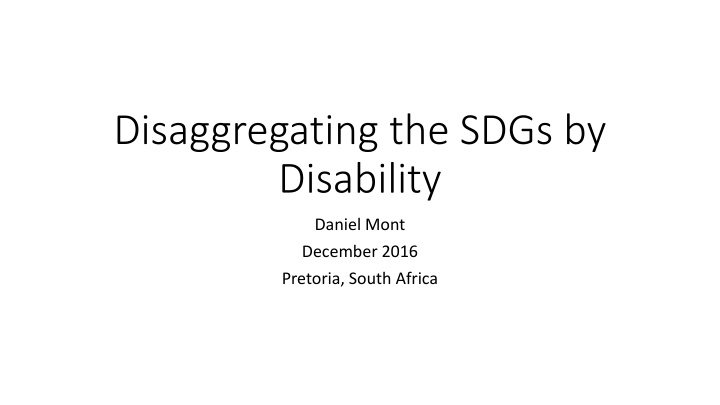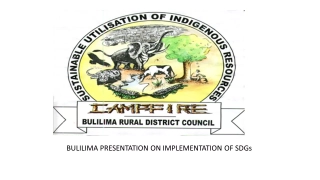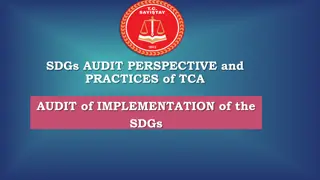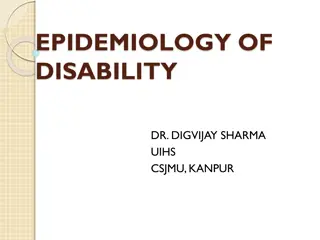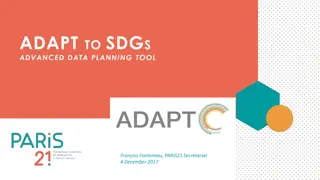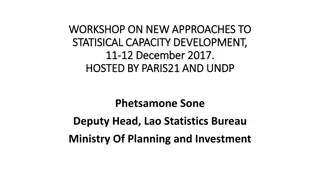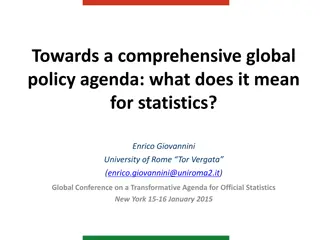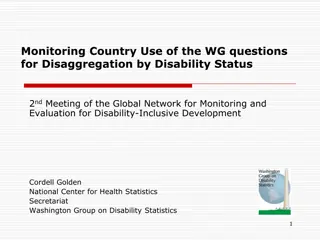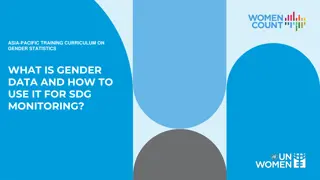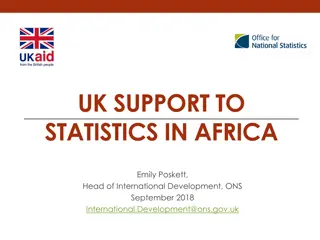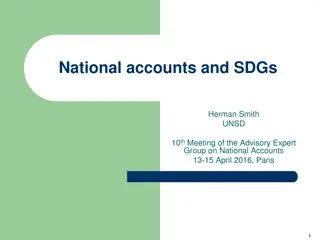Disaggregating the SDGs by Disability: Capacity of Statistical Offices
Investigating national statistical offices' capacity to disaggregate SDG indicators by disability status. Determined suitable indicators, surveyed countries, and found underestimation in ability. Some countries reported inability despite having suitable tools, while others planned to utilize the Washington Group Short Set for disaggregation.
Uploaded on Sep 11, 2024 | 2 Views
Download Presentation

Please find below an Image/Link to download the presentation.
The content on the website is provided AS IS for your information and personal use only. It may not be sold, licensed, or shared on other websites without obtaining consent from the author.If you encounter any issues during the download, it is possible that the publisher has removed the file from their server.
You are allowed to download the files provided on this website for personal or commercial use, subject to the condition that they are used lawfully. All files are the property of their respective owners.
The content on the website is provided AS IS for your information and personal use only. It may not be sold, licensed, or shared on other websites without obtaining consent from the author.
E N D
Presentation Transcript
Disaggregating the SDGs by Disability Daniel Mont December 2016 Pretoria, South Africa
Leaving No One Behind Leaving No One Behind Overriding principle of SDGs is the global eradication of disadvantage, which is consistent with the CRPD Two type of disability indicators General SDG indicators disaggregated by disability Special indicators addressing particular concerns of people with disabilities
Washington Group Short Set and the SDGs Washington Group Short Set and the SDGs WG Short Set can be used to disaggregate person level SDG indicators Tested methodology Designed to be internationally comparable Easy to incorporate into existing data collection tools
Purpose of Study Purpose of Study To investigate the current capacity of national statistical office to disaggregate SDG indicators by disability status
Steps Steps Determined which indicators were suitable for disaggregation by disability, i.e., at the person level 65 indicators In areas of poverty, hunger, health, education, gender, water and sanitation, energy, employment, inequality, cities, climate, and justice. Identified countries that have at one time participated in WG meetings or activities Sent out survey requesting information on ability to generate these indicators Questions available for disaggregating by disability
Categorization of indicators Categorization of indicators Can be produced and disaggregated by disability; Can be produced for the general population, but not disaggregated by disability; Cannot be produced, even for the general population; and Uncertain about whether it can be produced.
Results Results Thirty-nine countries responded, with thirty-seven having usable responses Results most likely underestimate ability to disaggregate indicators by disability Some countries reported they could not disaggregate even though they had WG questions on data tools used for indicators. Two countries with disability questions in surveys (one with WGSS) didn t respond about what they could disaggregate so were excluded from results Some countries that have used WGSS did not respond More countries are planning on using WGSS
Many indicators could not be produced for the general population Of those that could be produced for general population, ability to disaggregate varied a lot by country Some examples Egypt could disaggregate 6 of the 18 indicators they could produce Australia 18 of 29 Peru 4 of 25 UAE 4 of 4
Indicators that more than 10 (of 37) countries can produce Indicator Number Indicator Description Number of Countries 1.1.1 12 Proportion of population below the international poverty line, by sex, age, employment status and geographical location (urban/rural) 1.2.1 12 Proportion of population living below the national poverty line, by sex and age 6.1.1 11 Proportion of population using safely managed drinking water services 7.1.1 12 Percentage of population with access to electricity 8.6.1 16 Proportion of youth (aged 15-24 years) not in education, employment or training
Indicators that 5 to 10 (of 37) countries can produce (1 of 3) Indicator Number Indicator Description Number of Countries Proportion of population covered by social protection floors/systems, by sex, distinguishing children, unemployed persons, older persons, persons with disabilities, pregnant women, newborns, work-injury victims and the poor and the vulnerable Proportion of children and young people: (a) in grades 2/3; (b) at the end of primary; and (c) at the end of lower secondary achieving at least a minimum proficiency level in (i) reading and (ii) mathematics, by sex 1.3.1 5 4.1.1 6 4.2.2 7 Participation rate in organized learning (one year before the official primary entry age), by sex
Indicators that 5 to 10 (of 37) countries can produce (2 of 3) Indicator Number Indicator Description Number of Countries Parity indices (female/male, rural/urban, bottom/top wealth quintile and others such as disability status, indigenous peoples and conflict-affected, as data become available) for all education indicators on this list that can be disaggregated Proportion of women in managerial positions Proportion of individuals who own a mobile telephone, by sex Proportion of population using safely managed sanitation services, including a hand-washing facility with soap and water 4.5.1 8 5.5.2 5.b.1 6 5 8 6.2.1
Indicators that 5 to 10 (of 37) countries can produce (3 of 3) Indicator Number Indicator Description Number of Countries Proportion of informal employment in non- agriculture employment, by sex Average hourly earnings of female and male employees, by occupation, age and persons with disabilities Proportion and number of children aged 5-17 years engaged in child labour, sex and age 8.3.1 5 8.5.1 5 8.7.1 5
Conclusion Conclusion Disaggregation is feasible WGSS appropriate Used by fair number of countries at different income levels Other disability questions are used elsewhere of lesser quality but still allow disaggregation (but better than do you have a disability? Results of survey underestimate ability Some responded what they DID disaggregate not what they COULD Some countries using WGSS did not complete form Some countries we know have used or are planning to use WGSS did not respond Need to have capacity building and dissemination of WGSS
